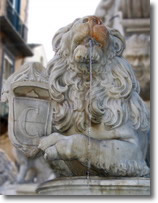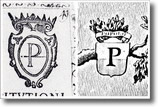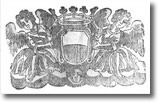
If we attempted to blazon, that is describe, the municiple coat-of-arms in the conventional language of heraldry, we should say: "Per fess gold and red", which in everyday language means a shield (in this case, of the Samnite type) divided horizontally into two of the same height, with the upper part gold and the other red.
Local historians have put forward various theories about the remote origins of the city's coat-of-arms. Some say that the colours recall those used for the standards that greeted the Emperor Constantine and his wife Elena in the city (324 AD); others assert that the red and gold symbolize the cult of our citizen ancestors of the sun and the moon (open to the objection that red cannot possibly represent the colour of the moon, which is answered by insisting that the warm colour relates to the moon when at dan "it is veiled by the vapours emanating from the earth"!).
These are not the only theories to have been advanced. It is said, in fact, that the colours were the symbol of the "generous nobility" of the city of Naples and that they were inspired by victorious battles fought during the period of the independent Duchy (755 - 1027). All of these suppositions were squashed definitively by the geat historian Bartolommeo Capasso (Naples, 1815 - 1900) who pronounced that "their conjectures have no foundation whatsoever".




